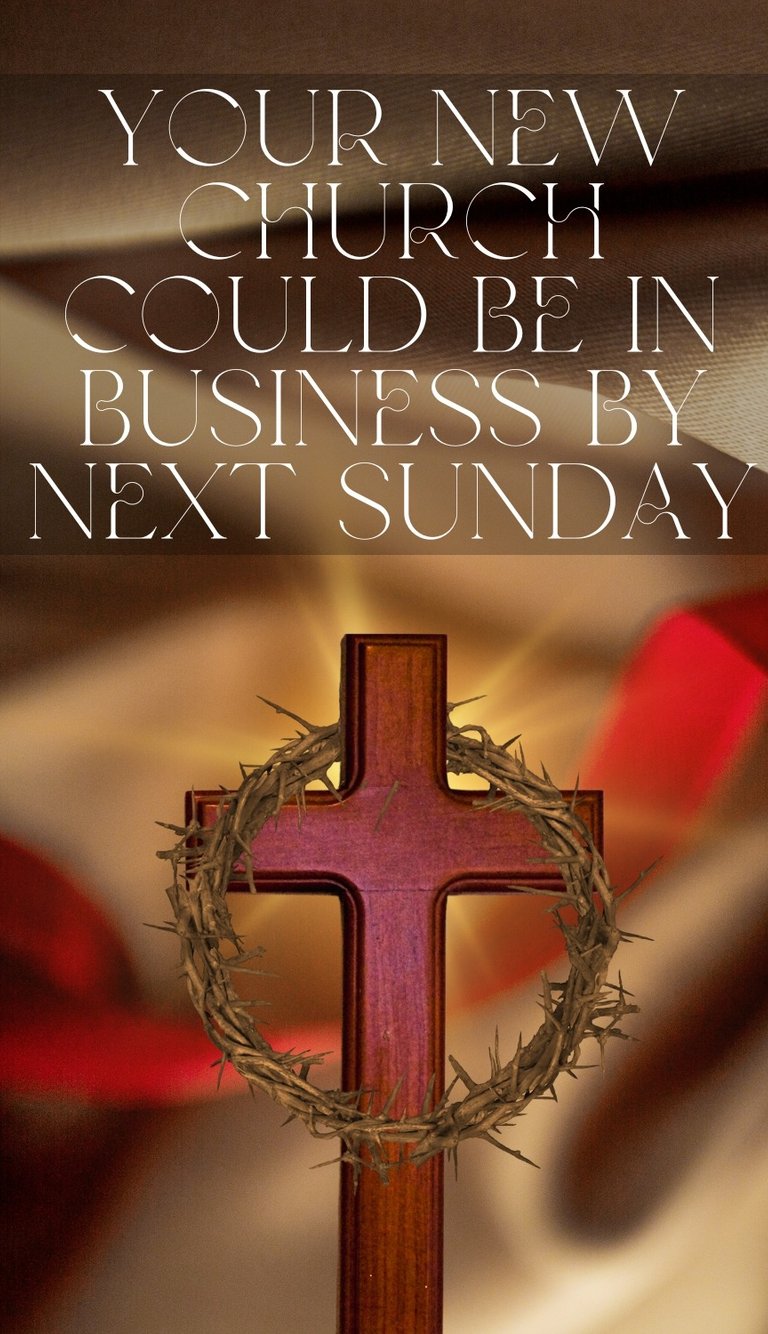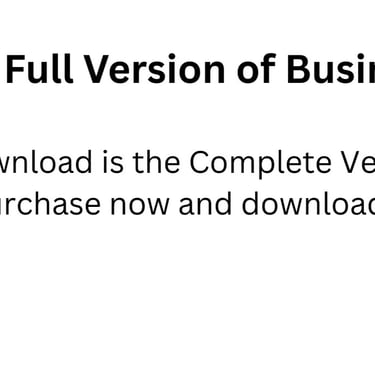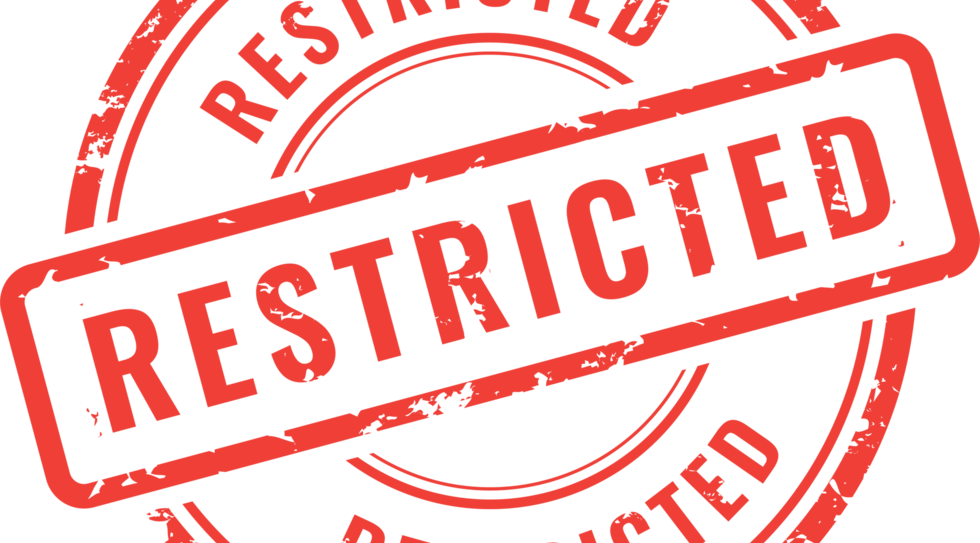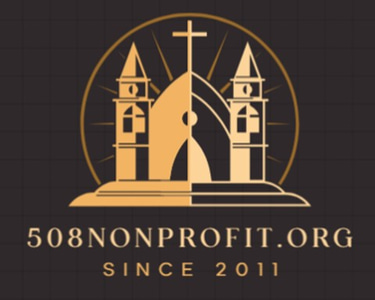Church Ministry Business Plan
The accompanying video can help you get started using social media platforms, Using Social Media Video
in promoting your church programs and mission. it shares messages that teach
you how to attract new members, and create meaningful engagement with
your community. This guide provide a practical starting point for churches to
balance faith with sound business practices, offering tools and strategies that
help them grow, reach more people, and build lasting impact both online and
within their congregation.
______________________________________


Business Plan Questionnaire
Age Group: From 18 to Unlimited
Cash On Hand Options: $400,000. Or start from where you are Budget
Work Hours Per Week: Up to the individual
Business Location: 1. Home Ministry 2. Website Ministry 3. Church Building
Website: Recommended
Equipment Needed: Basic Computer system for home start-up
Business Tax Status: Tax Exempt 508(c)(1)(A) Nonprofit Church
Employees Needed: Up to the individual
Insurance: Recommend Property and Directors Insurance Policy
Education: According to the Bible, there is no set age limit and no requirement that a person must have formal theological education (like seminary or Bible college), in order to become a minister or pastor. There are qualifications: 1 Timothy 3:1–7; Titus 1:5–9.
Corporate Legal Documents Bookkeeping Kit: Recommended
Complete Church Ministry Business Plan
__________________________________________________
Business Plan Report
[Name of Church] 508(c)(1)(A) Nonprofit
I. Executive Summary
The Sanctuary Church is a faith-based 508(c)(1)(A) nonprofit sanctuary organization established to operate as a professional off-grid AA/NA Recovery and Wellness Center. Unlike traditional churches that depend primarily on tithes and offerings, the Sanctuary Church is built on a model of diversified revenue streams to secure long-term financial sustainability.
Through a unique combination of spiritual guidance, holistic health services, wellness retreats, agricultural development, and event hosting programs, the Sanctuary Church will generate consistent income while advancing its mission to provide healing, community support, and opportunities for personal growth.


Vision: If your vision is to create the church of your dreams, this Sanctuary Off-Grid Church Business Plan is the perfect resource for you. Similar plans have sold for as much as $8,000, but we are now making it available to everyone for only $99. This comprehensive plan is built around multiple streams of income, ensuring your ministry does not have to rely solely on tithes and offerings to cover expenses. Once established, the Sanctuary Church model is designed to be fully self-sustaining, providing long-term stability for your faith community.
_______________________________________________________________________________________________________________________


The Sanctuary Off-Grid Christian Community Church is seeking $400,000 in funding to launch this business plan operation, on a 10-acre off-grid property. This investment will support land development, sustainable infrastructure, program expansion, and essential working capital, ensuring the successful establishment of a self-sustaining sanctuary that blends faith, recovery, wellness, and community impact.
Company Description
The Non-Medical Sanctuary Church (here and after “The Church”) is a nonprofit, faith-based sanctuary church model designed to operate sustainably through diversified income streams. The model integrates worship, spiritual services, education, retreats, and revenue-generating programs to create long-term stability while providing sanctuary and holistic support to the community.
By combining a religious mission with an entrepreneurial framework, The Church presents itself as a forward-looking organization capable of thriving independently of traditional donation-based structures. Its operations emphasize off-grid capabilities, community resilience, and a model that can be replicated by other ministries nationwide.
Problem
Traditional church models face persistent challenges of financial instability due to their heavy reliance on tithes and offerings. These inconsistent revenue streams restrict growth, prevent the launch of new community programs, and leave ministries unable to expand facilities, sustain outreach efforts, or provide reliable support for clergy and staff salaries. More critically, churches are often unprepared for large-scale crises that demand immediate intervention. For example, during the COVID-19 pandemic, faith-based organizations and nonprofits became lifelines for struggling families by distributing food, providing emergency aid, and offering spiritual and emotional support. Yet, many churches lacked the financial resilience to scale their response, limiting their impact at a time of greatest need. Without diversified and sustainable revenue models, churches risk being unable to fulfill their role as pillars of support during future crises, whether economic, social, or public health related.
Solution
The Sanctuary Church will overcome these challenges through a multi-stream income model that integrates faith-based programming with financially sustainable initiatives. Its primary source of revenue will come from non-medical AA/NA recovery and wellness services, supported by an off-grid farm-stay retreat program and cost-saving off-grid operations. Together, these initiatives provide a foundation for financial independence, while expanding the church’s capacity for community outreach, crisis response, and long-term impact.
Organizational Authority And Structure
Mission
The mission of The Church is to establish a spiritually grounded, financially sustainable sanctuary that empowers individuals and communities through faith, education, and self-sufficiency. By combining a sacred mission with innovative revenue models, the church demonstrates that sustainability and spirituality can exist hand-in-hand.
Key Success Factors
Multiple revenue streams reduce reliance on donations.
Off-grid capabilities lower long-term operational costs.
Strong market demand for faith-based retreats, education, and facility rentals.
Scalable model that can be replicated by other ministries.
Leadership committed to both spiritual and financial stewardship.
Unique positioning as a sanctuary serving spiritual, educational, and community needs.
Financial Summary (3-Year Projection)
Year 1 – Establishment: $150,000 in projected revenue from retreats, rentals, and early-stage programs; $120,000 in expenses; $30,000 surplus reinvested.
Year 2 – Growth: $350,000 projected revenue with expanded programming; $250,000 expenses; $100,000 net income.
Year 3 – Expansion: $600,000 projected revenue from full-scale programs, retreats, and facility rentals; $400,000 expenses; $200,000 net income.
The financial outlook reflects steady growth, a sustainable surplus, and the ability to reinvest into future expansions and outreach efforts.
Funding Requirement
The Non-Medical Sanctuary Church is seeking $400,000 in funding to support land acquisition or facility development, off-grid infrastructure installation, program and curriculum development, marketing, and initial staffing costs. This capital investment will establish the foundation of a scalable and sustainable sanctuary model with significant community and financial returns.
Income-Producing Activities
Pursuant to 26 U.S.C. § 508(c)(1)(A), the activities of the Sanctuary Church Off-Grid Christian Community are deemed consistent with its exempt religious purposes, provided that no portion of the net earnings inures to the benefit of any private individual or member, other than as reasonable compensation for services rendered. Within this framework, the Church will establish a faith-based AA/NA Christian counseling and recovery program as a central component of its mission.
This program is designed not only to advance the Church’s religious and charitable objectives but also to align with federal and state reimbursement structures that support non-medical recovery services. By operating within recognized behavioral health and community care models, the Church positions itself to qualify for reimbursement through multiple federal and state agencies, including programs that fund substance abuse recovery, crisis intervention, and holistic wellness services. Such alignment ensures that the recovery program remains sustainable, compliant, and mission-driven, while simultaneously reinforcing the Church’s role as a provider of critical community services during times of crisis:
Federal & State Reimbursement Programs
Client Employment Services
The Sanctuary Church will provide employment opportunities for AA/NA recovery clients as part of their holistic care journey. Clients will:
Work in hydroponics farming, aquaculture, Farm Stay Air BNB Rentals.
Be paid minimum wage, with opportunities to advance in skills and responsibility.
Participate in a structured program combining counseling, work therapy, and Christian discipleship.
II. Products & Services
Our Solution
The Sanctuary Church provides a unique balance of spiritual awareness and financial sustainability. Core offerings include:
Spiritual Services & Worship – Weekly services, prayer gatherings, and religious education.
Retreat Programs – Faith-based retreats, leadership workshops, and holistic healing programs.
Facility Rentals – Venues for weddings, conferences, and special events.
Educational Services – Courses on faith, leadership, holistic living, and community off-grid development.
Community Outreach – Food, counseling, and sanctuary programs designed for those in need.
This integrated approach ensures that spiritual and practical needs are met simultaneously, creating resilience and community trust.
Unique Selling Proposition (USP)
The Non-Medical Sanctuary Church is distinct from traditional faith-based organizations because it combines spiritual service with entrepreneurial sustainability. Its off-grid design reduces long-term costs, while its multiple income streams ensure financial stability. This dual emphasis positions the church as both a place of worship and a financially resilient community hub.
The Sanctuary Church is currently in the pre-launch development stage. The business plan has been fully developed, and early-stage interest has been expressed by community members, faith leaders, and local organizations seeking sustainable, alternative models for ministry. Site selection and initial partnership discussions are underway, with a focus on identifying land or facilities suitable for off-grid development.
Future Plans include:
Phase I – Infrastructure & Launch (Years 1–2):
Secure land and construct or retrofit facilities with off-grid systems.
Begin offering core services: worship, retreats, rentals, and basic community programs.
Establish branding, marketing, and outreach to attract members and clients.
Develop online presence and launch digital programming for extended reach.
Phase II – Growth & Community Integration (Years 2–3):
Expand retreat and rental services to regional markets.
Introduce advanced faith-based education programs and leadership training.
Build strong partnerships with local organizations and businesses to increase visibility and collaboration.
Add permanent staff positions to support expanded operations.
Phase III – Expansion & Replication (Years 3–5):
Establish a network of affiliated Sanctuary Churches nationwide through licensing or partnership agreements.
Expand facility offerings to include wellness centers, holistic care programs, and large-scale events.
Explore publishing, digital curriculum, and other intellectual property revenue streams.
Launch long-term community development initiatives, such as housing assistance and food security programs.
By presenting these structured development phases, the Sanctuary Church demonstrates a clear path to growth, profitability, and replication, making it an attractive investment for banks, foundations, and impact investors.
III. Market Analysis
Industry Overview
The faith-based and nonprofit sector in the United States represents a significant portion of community life and charitable giving. According to national reports, churches and religious nonprofits generate billions annually in donations, services, and events. However, many traditional churches struggle financially due to reliance on offerings alone. There is a growing demand for sustainable models that merge spirituality with entrepreneurial viability.
Additionally, the wellness and retreat industry is rapidly expanding, with U.S. retreat centers generating over $4 billion annually. The Sanctuary Church is well-positioned to merge this demand with faith-based programming, attracting both local members and regional visitors.
Target Market
The Non-Medical Sanctuary Church targets:
Faith-based individuals and families seeking a sanctuary that is both spiritual and self-sufficient.
Community members needing affordable access to facilities for weddings, events, and programs.
Retreat participants from across the region seeking spiritual renewal, leadership development, or holistic care.
Partner organizations looking for collaboration in outreach, education, and community development.
Market Needs
AA/NA Treatment Recover Choice For faith-based institutions.
Affordable retreat and event spaces.
Community services integrated with spiritual values.
Sustainable models that blend faith with innovation.
Competitive Analysis
Traditional Churches: Provide spiritual services but depend heavily on donations.
Secular Retreat Centers: Offer facilities but lack the spiritual component.
Other Nonprofits: Often mission-driven but not designed for sustainability.
Sanctuary Advantage: Combines the best of all three — faith, sustainability, and community service — while being supported by diversified revenue streams and off-grid cost savings.
IV. Marketing & Sales Strategy
Marketing Approach
Digital Marketing: Website, social media outreach, livestreamed worship, and retreat promotions.
Community Engagement: Local partnerships with schools, nonprofits, and small businesses.
Event Marketing: Hosting open houses, spiritual events, and workshops to attract new members.
Public Relations: Positioning the Sanctuary Church as an innovative leader in faith-based sustainability.
Sales Strategy
Membership-based contributions supplemented with fee-for-service activities (rentals, retreats, education).
Tiered retreat packages for individuals, families, and organizations.
Affordable pricing for community use to encourage repeat rentals.
Development of donor partnerships and faith-based sponsorships.
Revenue Streams
Membership & Offerings (15%)
Retreat Programs (15%)
Facility Rentals (8%)
AA/NA Treatment Center (52%)
Community Programs & Grants (10%)
V. Operations Plan
Location & Facilities
The Sanctuary Church will be developed on a dedicated property designed for both worship and multi-purpose activities. The site will include a worship hall, retreat lodging, classrooms, and rental spaces. Off-grid systems (solar, rain water capture, sustainable agriculture) will reduce operational costs significantly.
VI. Financial Plan
Startup Costs
10 Acre Off Grid Land Purchase: $50,000
Off-Grid Infrastructure (solar, water, septic): $70,000
Construction of Facilities: $237,000
Program Development & Curriculum: $5,000
Marketing & Technology: $5,000
Initial Staff & Operations: $+25,000
Permits: $8,000
Total Startup Requirement: $400,000
Revenue Projections (3-Year Forecast)
Year 1: Revenue $150,000 | Expenses $120,000 | Surplus $30,000
Year 2: Revenue $350,000 | Expenses $250,000 | Surplus $100,000
Year 3: Revenue $600,000 | Expenses $400,000 | Surplus $200,000
Break-Even Analysis: Break-even is expected in Year 2 with positive cash flow beginning mid-Year 1 due to early retreat and rental income.
Funding Sources
Grants from faith-based and community foundations.
Bank financing or low-interest nonprofit loans.
Angel investors or private donors aligned with faith-based initiatives.
Membership contributions and community support.
VI. Risk Analysis: Key Risks
Reliance on successful retreat and rental marketing.
Initial capital raising challenges.
Competition from secular retreat centers and traditional churches.
Conclusion
The 10-Acre Off-Grid 508(c)(1)(A) Sanctuary Church Business Plan, is designed as a self-sustaining, members-only holistic Christian health care ministry. Protected under federal law, it offers a faith-based recovery program that includes reimbursable services, diverse income streams, and client employment opportunities. What makes this model unique is that it does not require a large upfront infrastructure to begin.
This business plan can be started right from your own home. AA/NA recovery services are nonmedical, only faith-based counseling within a legally protected church framework program, will be the requirement.
Medical billing and coding will be the major key to start this business. You can learn it yourself or hiring a qualified billing specialist. Through proper coding and claim submission to Medicaid/Medicare, services can qualify for reimbursement from federal and state programs, ensuring steady income from day one. As membership grows, operations can easily expand onto the 10-acre off-grid site, creating a fully sustainable Christian community that integrates recovery, farming, retreats, and holistic health services.
This home-to-land model allows the Sanctuary Church to start small, operate lawfully under 508(c)(1)(A) protections, and scale into a full off-grid Christian community center with stable financial independence.


Price: 99.00



Support
Contact Us: Website Form
Guarantee
Email: the508nonprofit@yahoo.com
© The 508 Nonprofit Agency - 2025 All rights reserved.
ACKNOWLEDGEMENT: Information on this website is for educational purposes only. The 508 Nonprofit Agency does not provide tax, financial, or legal advice outside of matters specifically related to Section 508(c)(1)(A). Use of our services does not establish an attorney-client relationship. While The 508 Nonprofit Agency has legal counsel to assist with Section 508(c)(1)(A) matters, we are not acting as your attorney and do not review any information or documents you provide, for legal accuracy or sufficiency. All member paid services and programs are for educational purposes only.
Live Phone Consultation Appointment
____________________________________________________________________________________________________
About Us
____________________________________________________________________________________________________
